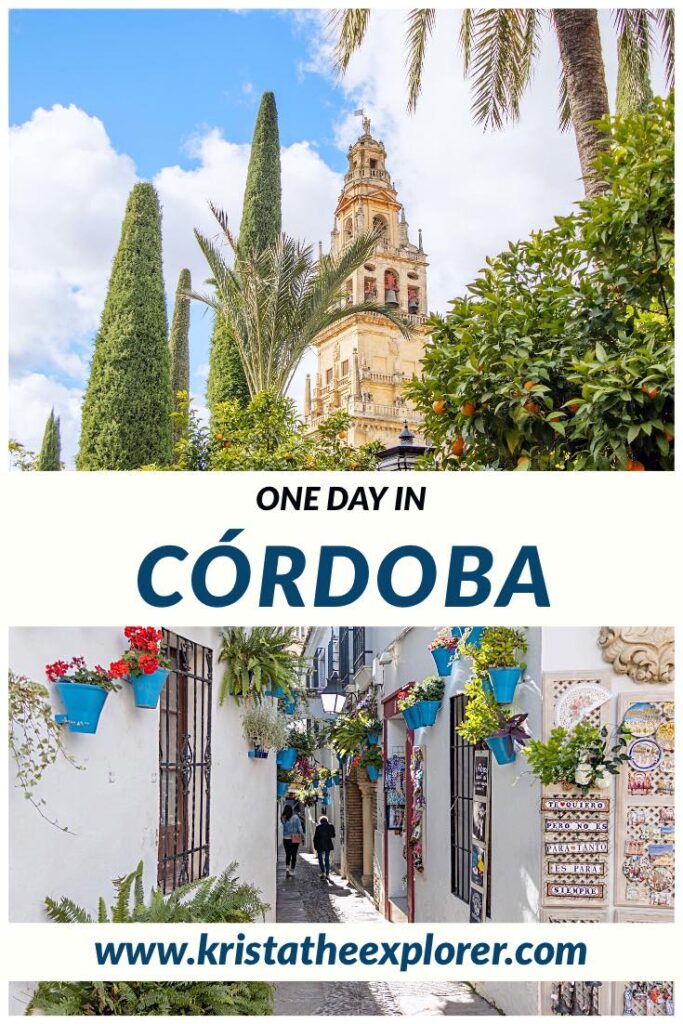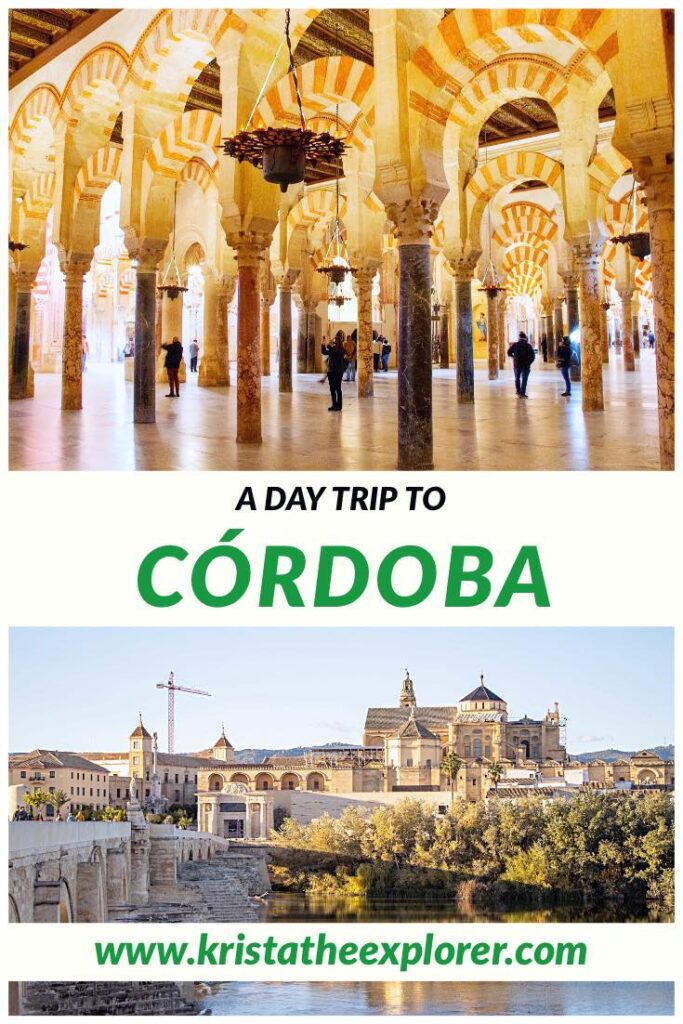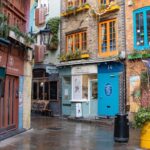Are you planning a trip to southern Spain in the near future? Then chances are you’ve come across Cordoba during your research. Cordoba is one city in Andalusia that I can never get enough of. Its historic streets, medieval old town, and its stunning architecture are just some of the many reasons that spending one day in Cordoba is so popular.
If you can spend 2 days in Cordoba then you’ll be able to explore this magical city at a leisurely pace. But if you’re like us and are planning a day trip from Malaga to Cordoba then you’ll still have plenty of time to see all of the main attractions here.
Like a lot of Spanish cities, Cordoba was founded by the Romans and became a very strategic location due to its position along the Guadalquivir River. In the early medieval period, when the Moors ruled the region, the prestige of Cordoba increased tenfold and is where much of the impressive architecture we see today comes from.
As you walk along the streets of Cordoba, you’ll see a lot of Christian influence throughout the city too. That’s because by the 13th century the Christians had conquered this part of Andalusia. As you can imagine, with such a rich history, there are a lot of fantastic things to do in Cordoba. Here are my recommendations about how to spend one day in Cordoba.
How to spend one day in Cordoba
Puente Romano
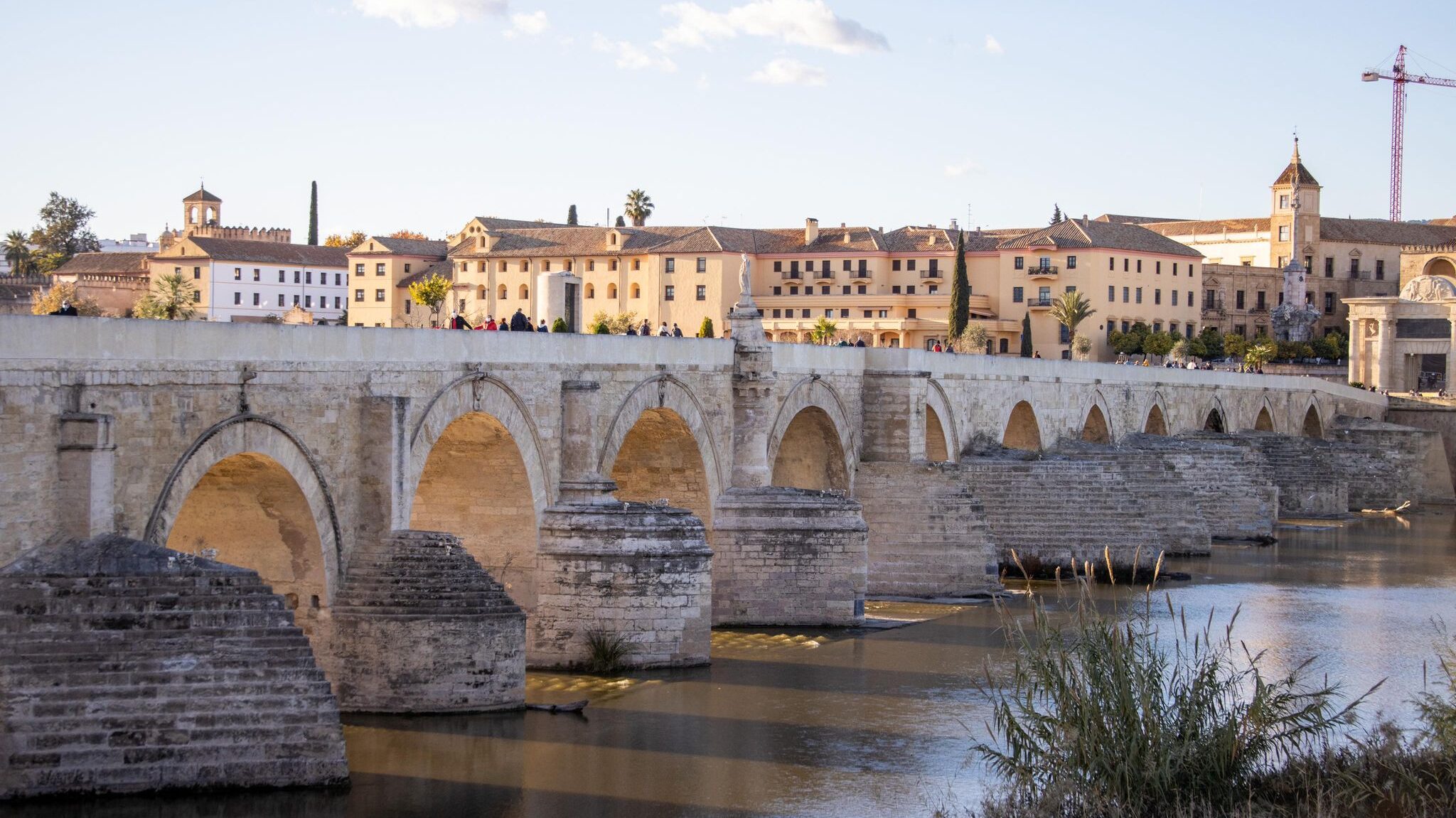
You can’t plan a day trip to Cordoba without walking across its famous Roman bridge – Puente Romano. The bridge was originally built in the 1st century by the Romans, and crosses the Guadalquivir River. What you see today is a medieval reconstruction, as the Roman bridge most likely would have been wooden.
Nevertheless, its architecture was impressive enough to make it one of the Game of Thrones filming locations in Spain, and it continues to be one the most popular attractions in Cordoba – especially around sunset.
If you’re driving to Cordoba, I would recommend parking near the bridge, on the far side of the river. Cordoba’s old town is a UNESCO World Heritage Site so no cars apart from residents and taxis are allowed inside.
Torre de la Calahorra
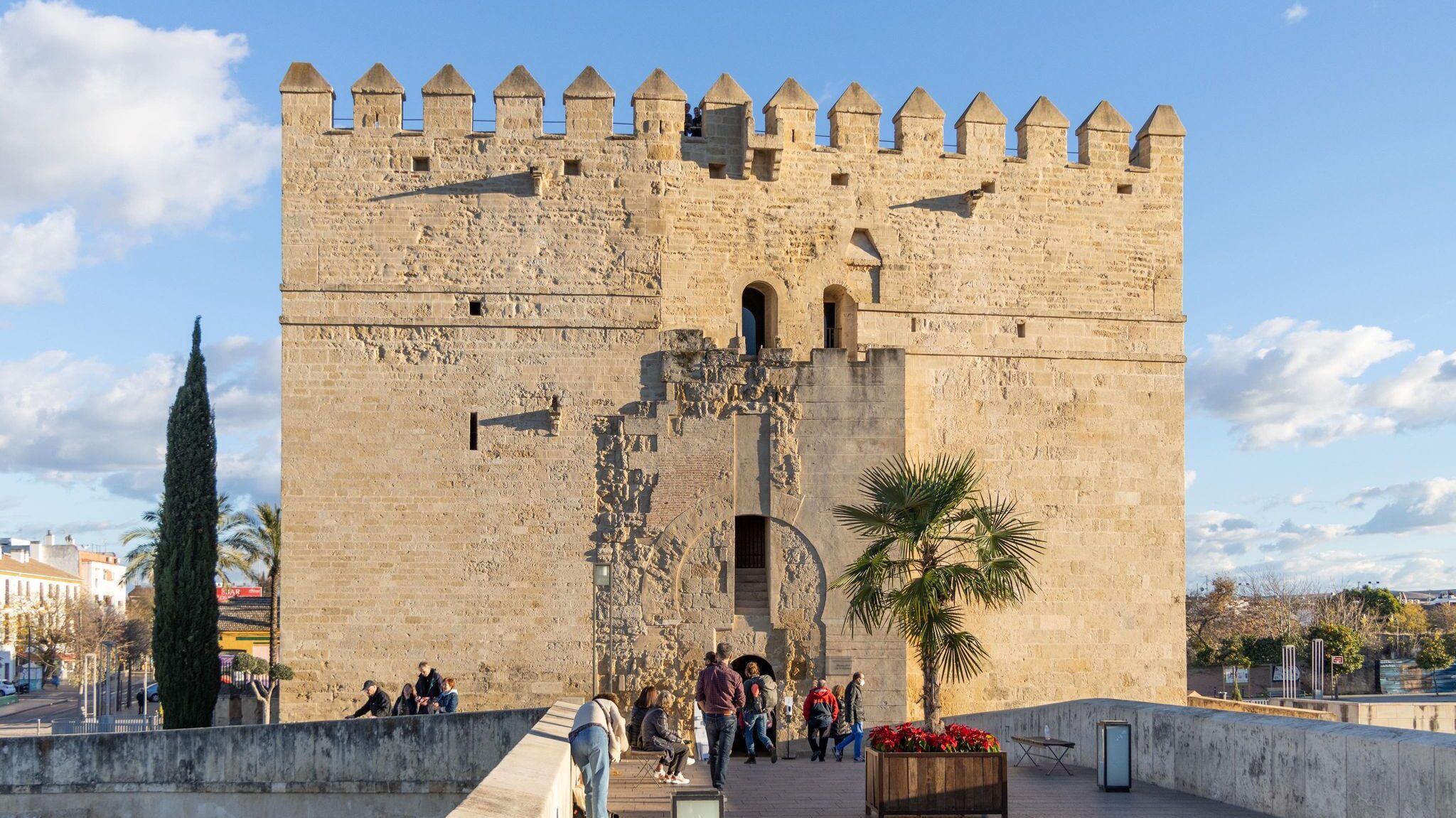
Torre de la Calahorra sits at the far end of the Roman bridge and was built by the Moors in order to improve the defence of the city. In the 14th century the tower underwent a series of improvements and became more of a fort than a tower, which is what you see today. For €4.50 you can go inside Torre de la Calahorra and learn more about the history of Cordoba through its museum. I would recommend visiting this attraction first before you cross over the bridge into the old town.
Puerta del Puente
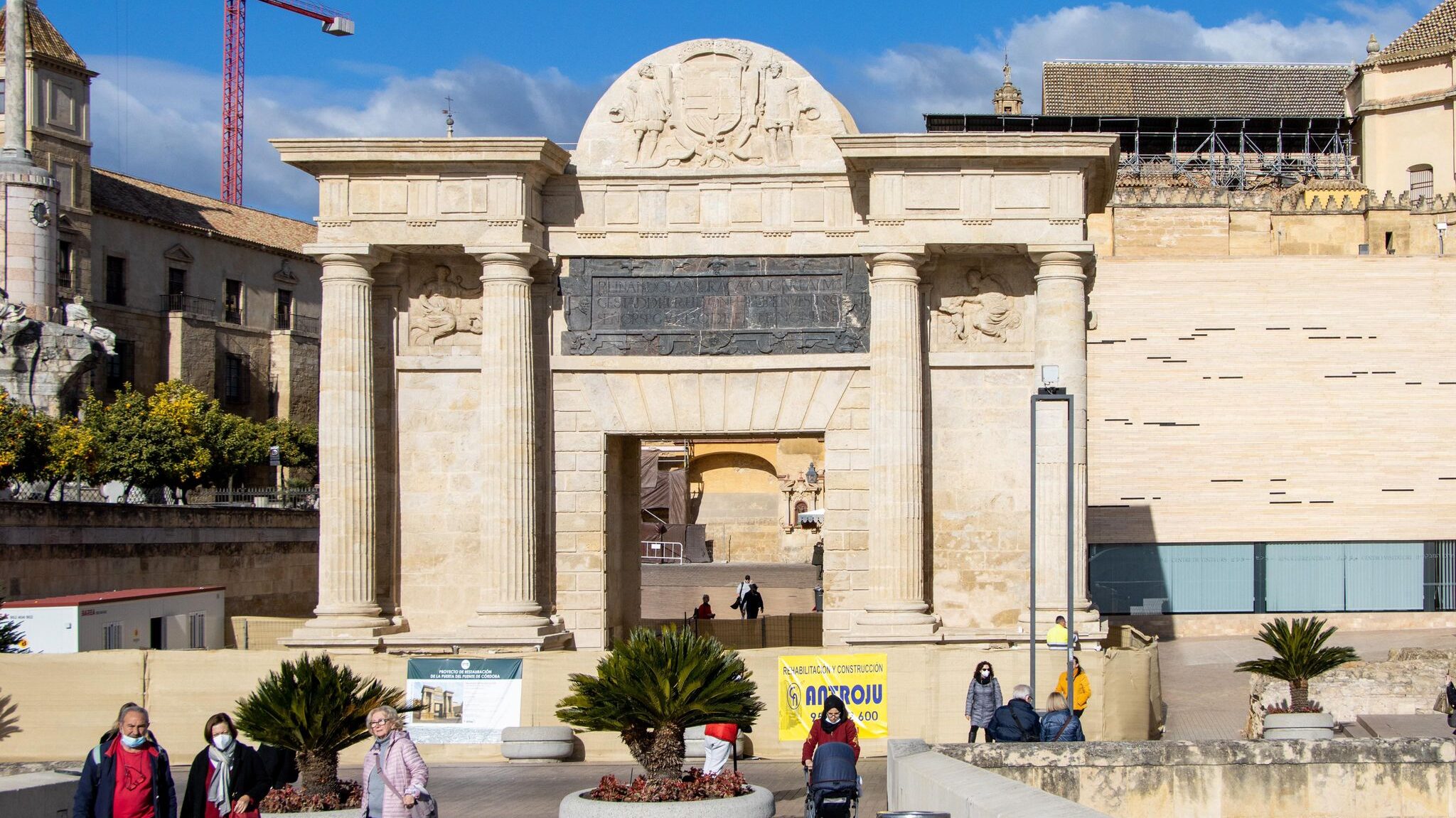
As you make your way across the Roman bridge, Puerta del Puente will rise to meet you in the distance. Despite its Roman architecture, it was actually built in the 16th century to commemorate a visit to the city by King Philip II. It was specifically built where Roman gates into the city would have stood. If you’re planning on spending one day in Cordoba, this is one attraction that you can easily add to your itinerary as you make your way into the old town.
Centro Historico de Cordoba

You could probably spend one day in Cordoba just walking around the beautiful streets of the old town and the Jewish Quarter. The narrow cobbled streets lined with whitewashed houses, together with the medieval sandstone walls of the Mezquita and the Royal Palace are truly breathtaking.
The Centro Historico de Cordoba is one of the largest of its kind in Europe, and the entire area is a UNESCO World Heritage Site. You can even catch a glimpse of part of the Roman walls which were built in 206 BC. Luckily, Cordoba’s old town isn’t too big, and you can always join one of the walking tours in Cordoba too if you’re not sure what the best areas to see are.
Calleja de las Flores

The most popular street in Cordoba to visit is Calleja de las Flores in the Jewish Quarter. Even if you don’t visit in the springtime when the flowers are in full bloom, it’s beautiful. It’s a very narrow street, only a few minutes walk from the Mezquita, and its whitewashed walls are lined with blue flower pots and beautifully presented flowers.
At the end of the street you’ll find a small courtyard with a souvenir shop, and you can catch a glimpse of the bell tower of the Mezquita in the distance. Visiting this street is one of the best free things to do in Cordoba and it certainly shouldn’t be missed during a day trip here.
Patio de los Naranjos
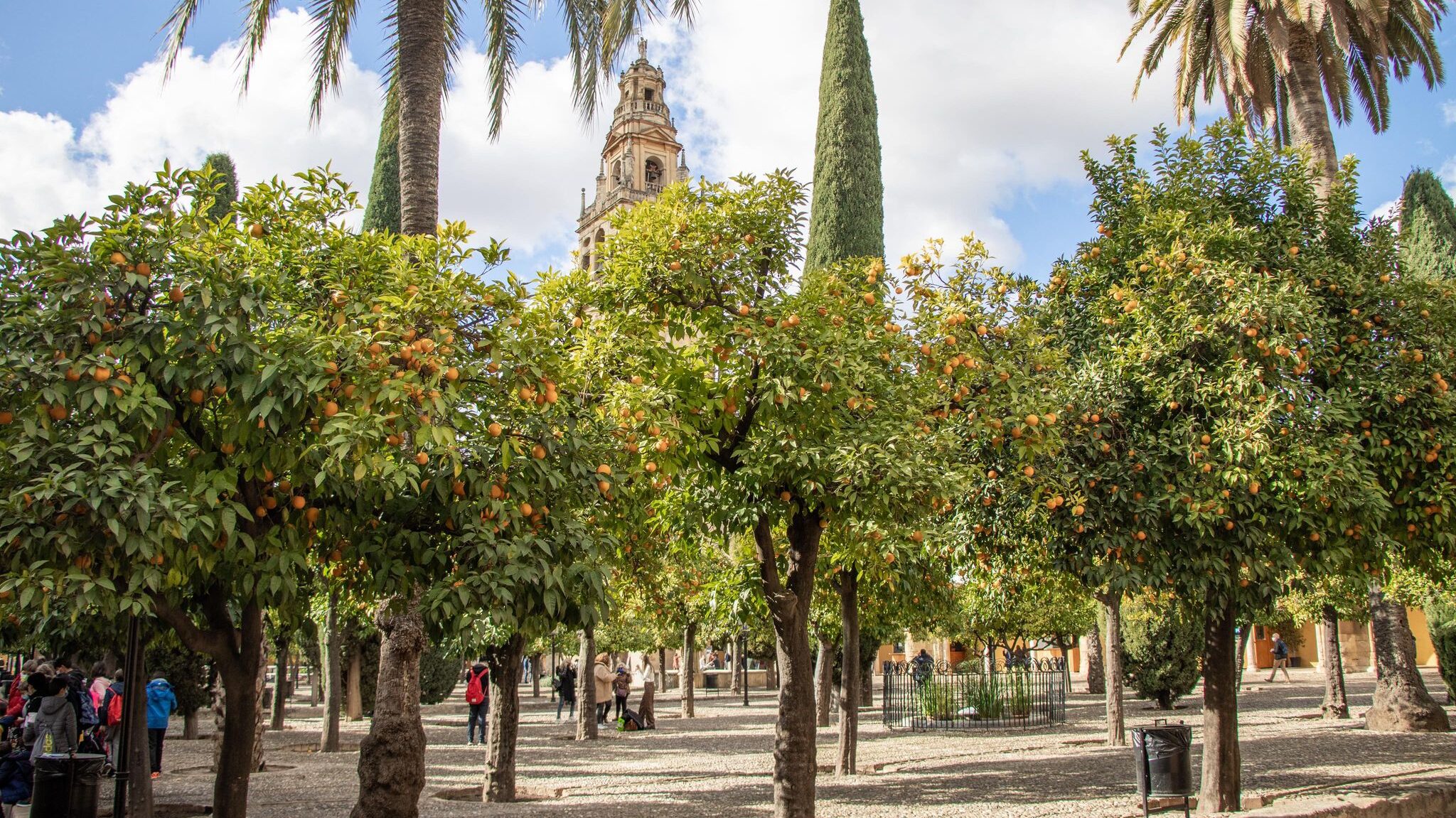
Patio de los Naranjos is the large courtyard you’ll walk through as you make your way to the entrance of the Mezquita. It would have been a space for religious rituals before entering the mosque in the medieval period. If you don’t have tickets to go inside of the Mezquita, Patio de los Naranjos is completely free to roam around.
The courtyard was traditionally filled with palm trees, but in the 15th century orange trees were planted instead. The patio is also a great area to sit and get some shade, especially in the summer months.
Mezquita Bell Tower
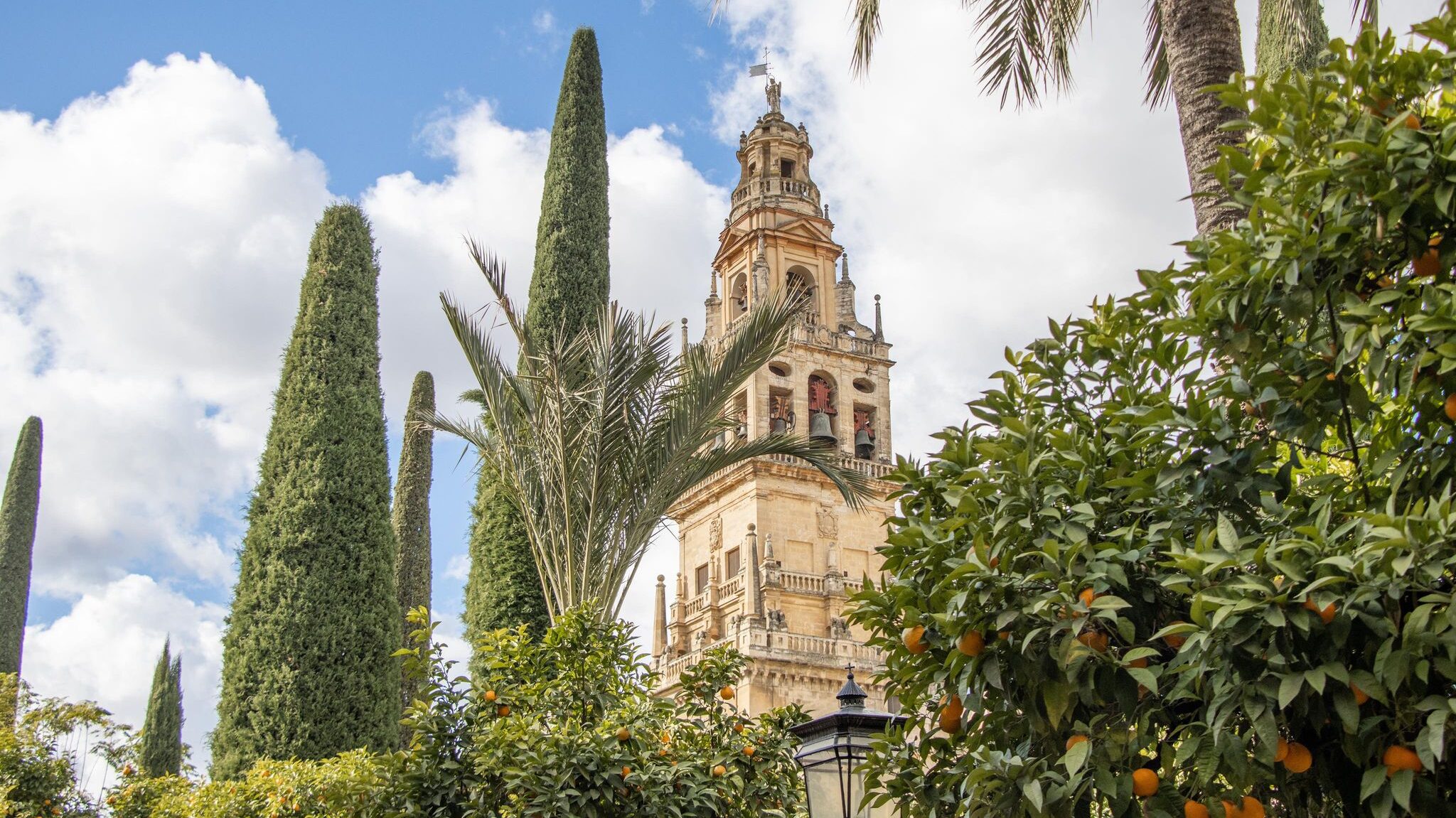
If you’re able to climb, a visit to the top of the bell tower is an absolute must for the best views in the city. The tower was built at the same time as the mosque, in the 9th century, and was a minaret before being converted into a bell tower by the Christians.
From the top, you can see the Mezquita in all of its glory, as well as the nearby Alcazar de los Reyes Cristianos. Entrance to the bell tower costs only €3, so if you’re capable of climbing 130ft make sure you grab yourself a ticket on the day. It’s a great addition to a one day in Cordoba itinerary.
Mezquita-Catedral de Cordoba
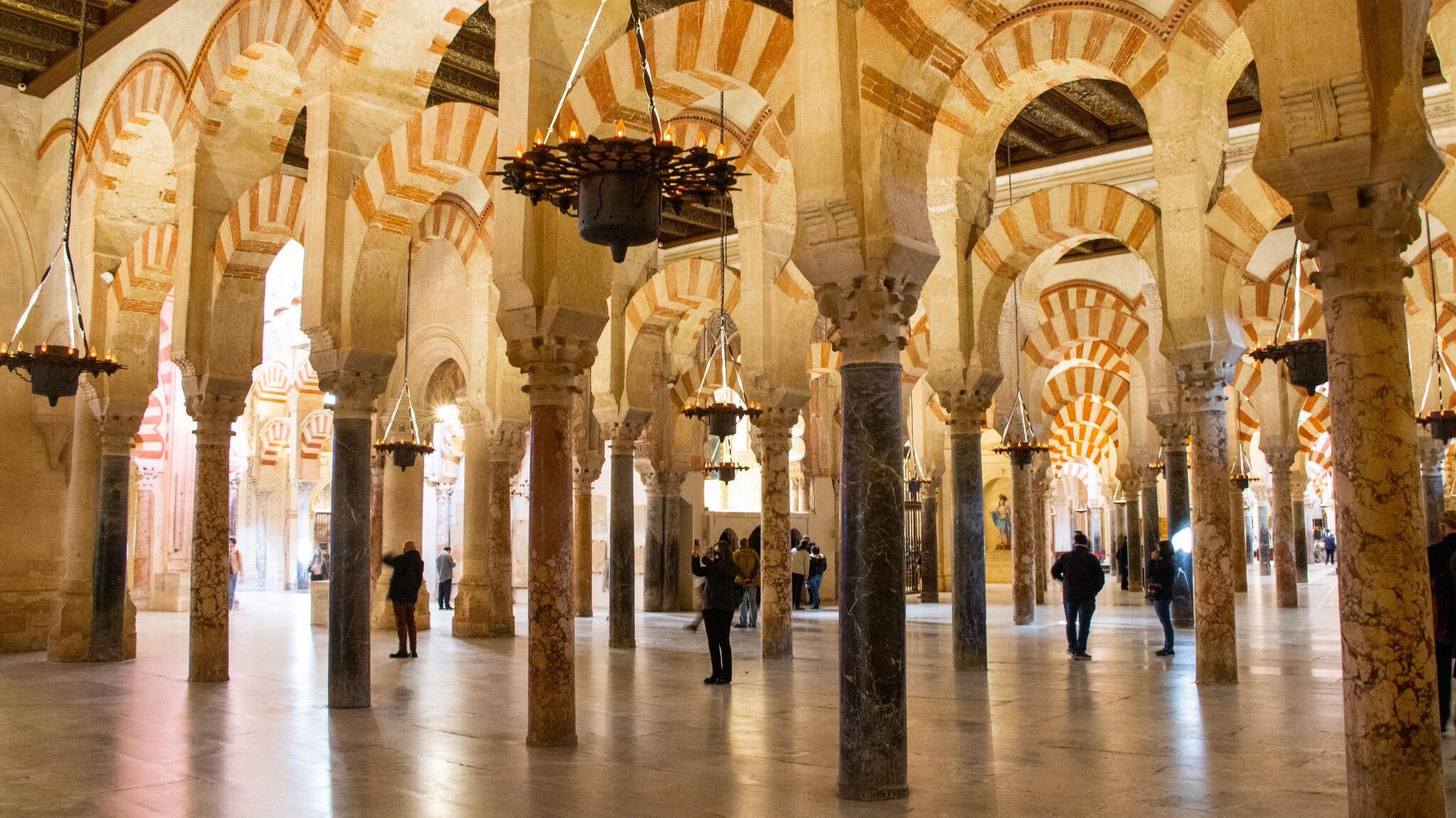
The main attraction for everyone who visits Cordoba is the Mezquita-Catedral de Cordoba, also referred to as the Mezquita. It’s considered to be one of the greatest examples of Islamic architecture in the world, and it’s also one of the largest mosques worldwide. It was originally built in the 9th century and by the 12th century it had doubled in size. In 1236, when Cordoba was conquered by the Christian army, they were so impressed by it that they decided to convert it into a cathedral.
Apart from its incredible architecture, what’s fascinating about the Mezquita is its blend of Muslim architecture and Christian artwork inside – you’ll even find a Christian altar set in between Arab archways. Cordoba is a city known for having a peaceful coexistence between the Muslims, Christians, and Jews in the medieval period (the Mezquita sits on the edge of the Jewish Quarter). There’s no better place to witness this than at the Mezquita.
If you’re only planning to spend one day in Cordoba, I would suggest booking tickets for the Mezquita online before you visit. In the peak season, tickets are known to sell out quite quickly so you don’t want to miss out.
View over the Guadalquivir
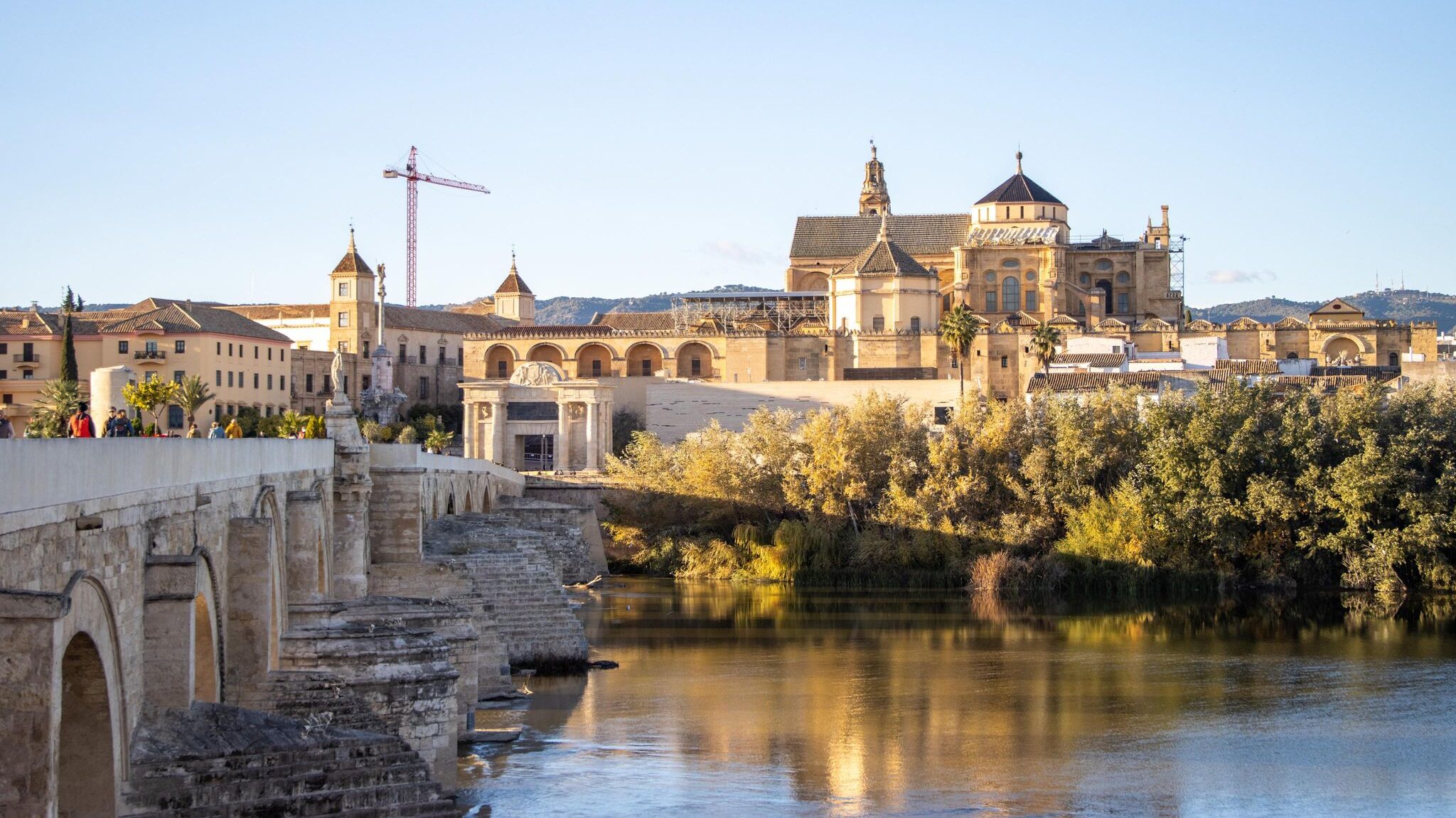
What better way to end your one day in Cordoba than by taking in the views over the Guadalquivir River near sunset? There are usually musicians on the Puente Romano playing traditional Spanish songs, so the walk back to your car (if you parked where I recommended) will be a pleasant one. I don’t think I could ever get tired of this view, and it’s one I look forward to seeing each time I visit this amazing Andalusian city.
Places to eat in Cordoba
Taberna El Abanico

There are a lot of amazing places to eat in Cordoba. One that I would highly recommend that’s in the middle of the old town is Taberna El Abanico. It’s located at the entrance to Calleja de las Flores so you should have no issues locating it. Normally this tapas bar in Cordoba is packed, but we visited in November and easily found a seat inside.
They have a great selection of traditional Spanish dishes that are found mostly in Cordoba itself. The prices are very reasonable and you can tell everything is freshly prepared. If you don’t want to venture too far from the main attractions, this is a great option for somewhere to eat.
Cafe Viena
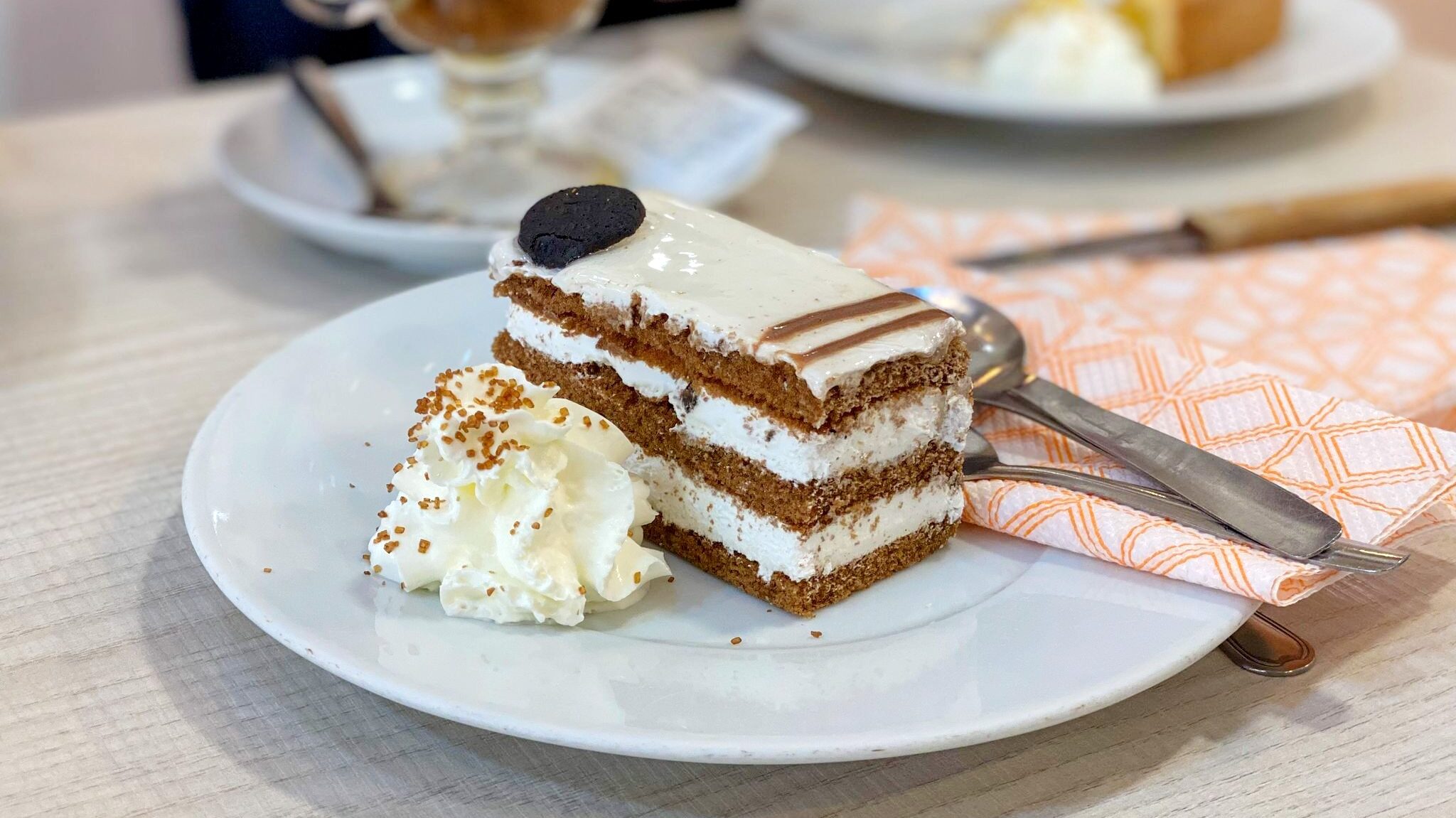
Cafe Viena is a 15 minute walk from the Mezquita, heading a bit further out of the old town. It’s a family-owned coffeehouse serving fresh brews and a wide selection of pastries and cakes. The walk to the cafe is slightly uphill so it may not be a good option if you’re not good on your feet. We stopped here before heading back to the car for a quick drink and a cake. The prices are slightly cheaper than those in the heart of the old town, so it’s a great option if you’re visiting Cordoba on a budget.
Where to stay in Cordoba
There are a lot of incredible places to stay in Cordoba. There are only a handful of hotels available to stay at within the old town, so it may be a good idea to stay just outside of it if you’re looking for very modern hotels. One of the most popular hotels in Cordoba’s old town is Las Casas de la Juderia de Cordoba which sits just across from the Mezquita. Alternatively, H10 Palacio Colomera and Casa San Mateo are both excellent choices and come highly recommended by travellers.
Is Cordoba worth visiting?
Sadly we didn’t have time during our one day in Cordoba to visit the 13th century Alcázar de los Reyes Cristianos. The name translates to the Castle of the Christian Monarchs and is absolutely stunning to walk around. I’ve visited on a previous occasion and would highly recommend adding it to your itinerary.
One day in Cordoba may not be enough to explore this beautiful medieval city completely, but you should have plenty of time to see its main attractions. We drove up to Cordoba from Malaga, but it’s just as easy to plan a Cordoba day trip from Seville or Granada too. Wherever you’re coming from, you’ll quickly realize that Cordoba is a city like no other in Spain and rightly deserves a spot on anyone’s bucket list.
Have you been to Cordoba before? Or any of the nearby white villages such as Iznajar? I’d love to hear what you thought about Cordoba and if you have any recommendations regarding attractions to visit. You can always follow me on Instagram to keep up to date with my latest trips too.
This post may contain affiliate links, which means I may earn a commission from the discount codes used or when a link/ad is clicked. All purchases made will come at no extra cost to you, and I only include products and services that I would personally recommend.
Pin this blog post for later!
